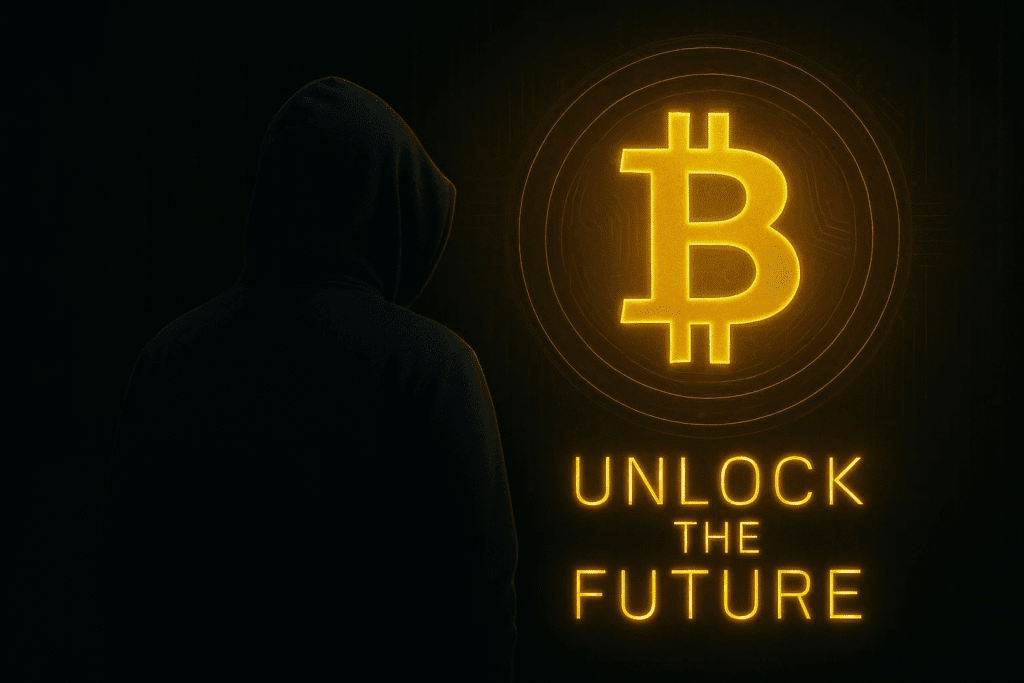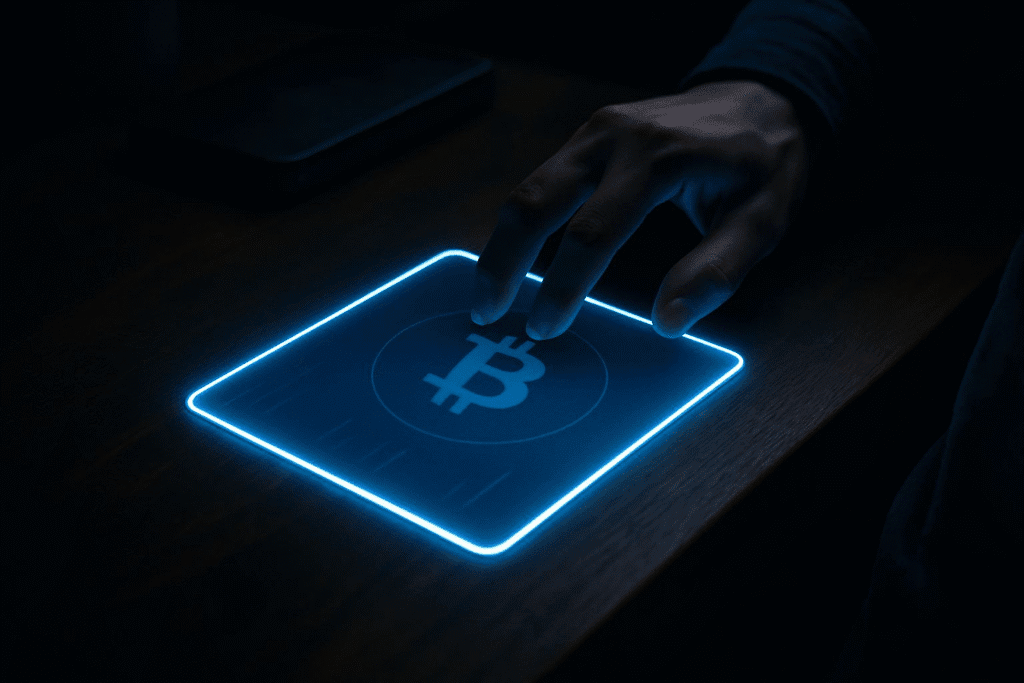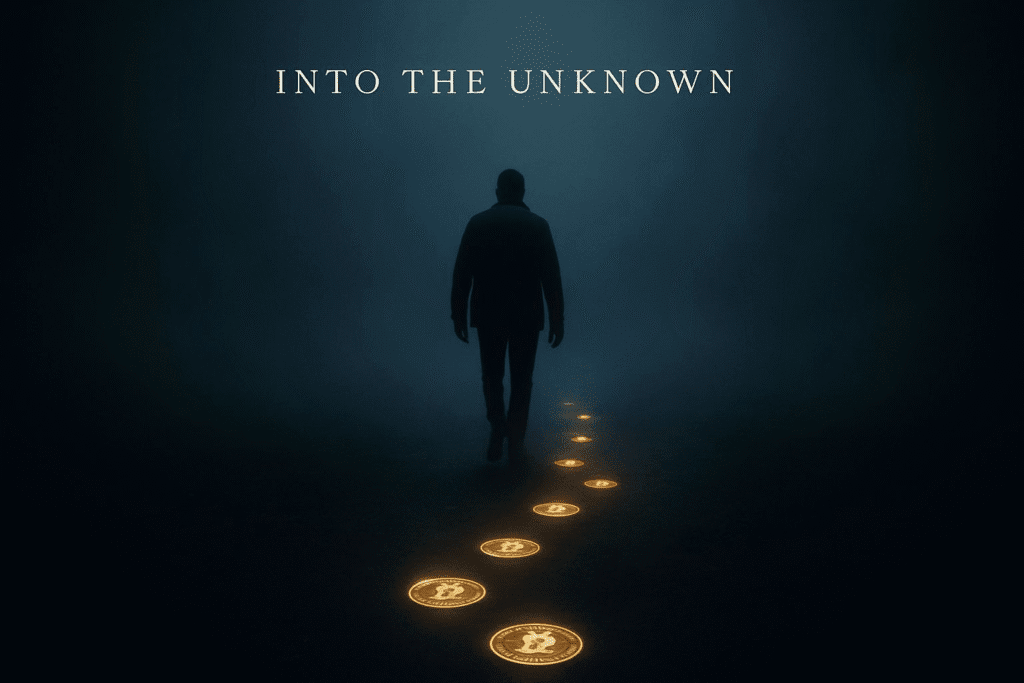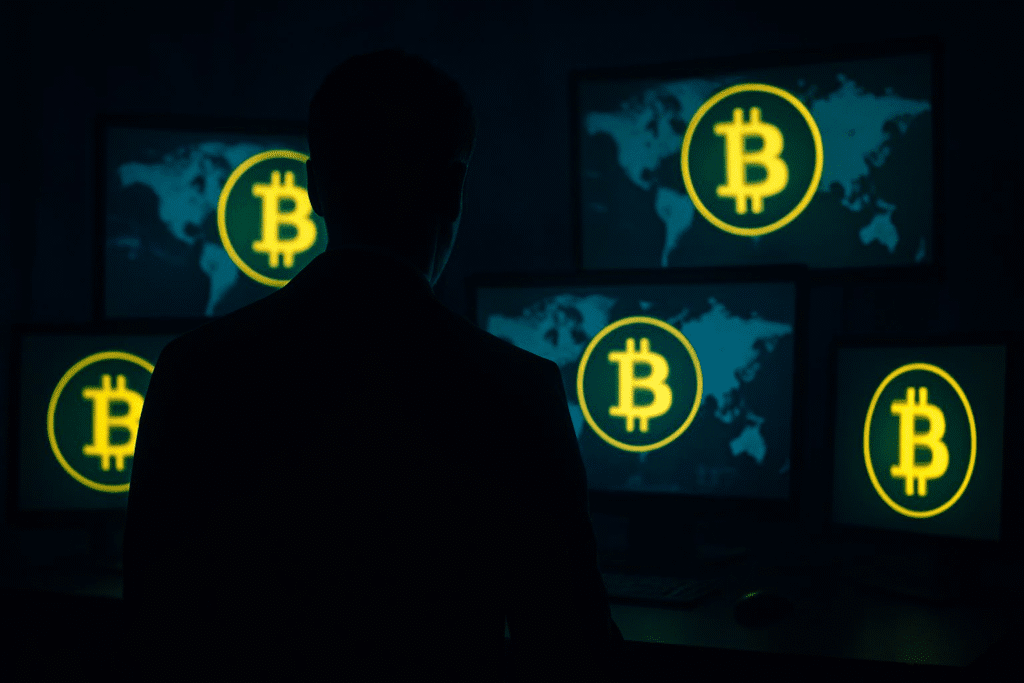Introduction

When it comes to cryptocurrency, no name commands more intrigue and speculation than Satoshi Nakamoto. This elusive individual—or perhaps collective—didn’t just introduce Bitcoin to the world; they ignited a financial revolution that redefined how we think about money, trust, and decentralization. Yet, just as suddenly as they emerged, Satoshi vanished—without interviews, announcements, or even a farewell message.
After releasing the groundbreaking Bitcoin white paper in 2008 and mining the very first block of the blockchain in early 2009, Satoshi was an active presence in cryptography communities and developer discussions. But by 2011, that voice fell silent. What remained was not only a new form of digital currency but also roughly one million Bitcoins, untouched to this day, and a legacy shrouded in mystery.
Why would the architect of such a transformative technology step away, especially when it had the potential to make them one of the wealthiest individuals on the planet? Was this a deliberate choice to safeguard Bitcoin’s decentralized nature? Or was it a strategic retreat in the face of possible legal, political, or personal danger?
In this blog, we’ll go beyond the surface theories and media headlines. We’ll trace Satoshi’s timeline, examine the most credible explanations for their disappearance, and reflect on how their absence continues to shape the world of cryptocurrency today.
Let’s explore one of technology’s greatest mysteries — and what it reveals about innovation, anonymity, and power in the digital age.
The Rise of Satoshi Nakamoto

Before the enigma of Satoshi Nakamoto captivated the world, there was a clear and radical mission: to redefine how humanity perceives money, trust, and authority. Satoshi didn’t merely create Bitcoin — they ignited a movement that challenged the very foundations of the global financial system.
A. The White Paper That Redefined Money
On October 31, 2008, as the world grappled with the fallout of the global financial crisis, Satoshi released a document that would alter the course of economic history: “Bitcoin: A Peer-to-Peer Electronic Cash System.”
Far from a technical curiosity, this white paper introduced a revolutionary concept — a currency free from reliance on central banks, governments, or any single point of control. Instead, it was governed by mathematics, cryptography, and collective agreement. The timing was strikingly intentional. As trust in traditional institutions crumbled, Bitcoin emerged as a bold alternative, offering transparency and autonomy where opacity and dependency had reigned.
B. The Birth of the Bitcoin Network
On January 3, 2009, Satoshi mined the Genesis Block, the first-ever block of the Bitcoin blockchain. Embedded in this block was a message that has since become iconic:
“The Times 03/Jan/2009 Chancellor on brink of second bailout for banks.”
This was more than a simple date marker; it was a pointed commentary on the fragility of centralized banking and a declaration of Bitcoin’s purpose as a form of resistance to financial manipulation.
Satoshi continued to nurture the network, releasing the initial version of the Bitcoin software and engaging with a small but passionate community of developers and cryptographers through forums and emails. These early collaborations laid the technical and philosophical groundwork for what Bitcoin would become.
C. The Silent Fortune
Between 2009 and 2010, Satoshi is estimated to have mined over 1.1 million Bitcoins — a sum that today would be valued at well over $120 billion. What makes this even more extraordinary is that these coins have never been moved. This untouched fortune adds to the intrigue, suggesting that Satoshi’s motives were never driven by personal wealth, but by a commitment to an idea greater than any individual.
Satoshi’s ascent wasn’t marked by pursuit of recognition or riches. It was about crafting a system designed to endure beyond its creator. And as Bitcoin began to capture global attention, Satoshi chose to step back — allowing the technology to speak for itself.
The Sudden Disappearance

As Bitcoin began its ascent from a niche experiment to a global phenomenon, its creator, Satoshi Nakamoto, made an equally remarkable exit. Without fanfare or explanation, Satoshi stepped back—leaving behind a revolutionary codebase, fragments of cryptic messages, and a fortune in untouched Bitcoin that continues to fuel speculation.
A. The Final Communications
In April 2011, Satoshi sent what would become his last known message to the developer community. In an email to fellow contributor Gavin Andresen, Satoshi wrote:
“I’ve moved on to other things. It’s in good hands with Gavin and everyone.”
After that brief farewell, Satoshi disappeared from public view entirely. There were no further forum posts, no more contributions to the code, and no clarifications about his identity or intentions. The silence was absolute — and deliberate.
B. Theories Behind the Exit
Over the years, countless theories have emerged to explain Satoshi’s sudden withdrawal.
- Guarding Decentralization: One prevailing view is that Satoshi stepped away to protect Bitcoin’s core principle — decentralization. By removing himself, Satoshi ensured that no single individual could become a figurehead capable of swaying the project’s direction or undermining its ethos.
- Legal and Political Pressures: As Bitcoin started to attract attention from regulators and governments, some speculate that Satoshi may have feared legal repercussions. After all, launching a currency independent of state control could easily be seen as a challenge to powerful financial institutions and nation-states.
- Concerns for Personal Safety: With Bitcoin’s value on a steep rise and Satoshi’s wallet holding over a million Bitcoins, the potential risks — from legal threats to criminal targeting — may have made anonymity and retreat the safest path forward.
C. The Legacy of Silence
Satoshi’s withdrawal didn’t weaken Bitcoin — it strengthened its identity. The absence of a central authority figure reinforced Bitcoin’s status as a truly decentralized network. The untouched Bitcoin wallet, holding over 1 million BTC, stands as a powerful symbol: a testament to restraint, principle, or perhaps the heavy cost of creating something so disruptive.
Satoshi didn’t simply walk away from a groundbreaking invention. By vanishing, he etched Bitcoin’s decentralized philosophy into its very foundation. Yet, the question lingers: was this a visionary act of selflessness — or a necessary retreat in the face of mounting dangers?
Theories Behind the Disappearance

The disappearance of Satoshi Nakamoto is one of the most intriguing unsolved puzzles in modern technology. His exit has inspired an array of theories — from ideological decisions to high-stakes conspiracies — each attempting to explain why the creator of Bitcoin chose to fade into obscurity just as his invention began to reshape the world.
A. Privacy and Ideological Commitment
One of the most widely accepted theories is that Satoshi’s departure was an intentional act aligned with his core values. To truly achieve decentralization, Satoshi may have felt it was essential that no single individual — not even the creator — could be seen as Bitcoin’s leader or guardian. His silence emphasized a powerful message: Bitcoin was not meant to belong to one person, but to everyone and no one at the same time.
B. Legal Risks and Government Pressure
As Bitcoin began to challenge the foundations of traditional finance, it inevitably drew the attention of governments and regulatory bodies. Some analysts argue that Satoshi’s withdrawal was a strategic move to avoid legal entanglements or being perceived as a threat to national security. Adding weight to this theory are reports, including a claim from a Department of Homeland Security (DHS) agent, suggesting U.S. authorities may have uncovered Satoshi’s identity and possibly even met with the creators in California prior to 2019.
C. Concerns for Personal Safety
With an estimated Bitcoin fortune worth over $100 billion, Satoshi would have become an obvious target for criminal activity. The risks of extortion, kidnapping, or worse may have made continued anonymity not just prudent, but necessary for survival. Stepping away from the public eye may have been the only way to ensure his personal safety.
D. The Theory of Satoshi as a Group
The notion that Satoshi Nakamoto was not an individual, but rather a team operating under a shared pseudonym, continues to gain traction. Some cryptography experts and intelligence insiders point to the sophistication of Bitcoin’s design as evidence of a collective effort. The claim by a DHS agent that the original creators were at least four individuals adds another layer of intrigue to this theory.
E. The Conspiracy Angle
Beyond the grounded theories lie the more sensational possibilities. Could Satoshi have been part of a government project that spiraled beyond its original purpose? Was he silenced by intelligence agencies concerned about Bitcoin’s potential to destabilize global economies? Or, in the most extreme scenarios, could Satoshi have been eliminated to protect the existing financial order?
Whether Satoshi disappeared to protect Bitcoin’s principles, safeguard his own life, or under the weight of forces beyond his control, his absence has only magnified the legend. The creator’s vanishing act transformed Bitcoin from a technological innovation into a symbol — a reminder of the power and mystery that can accompany true decentralization.
The Government Connection and Conspiracies

Satoshi Nakamoto’s disappearance has done more than inspire curiosity — it has given rise to a host of conspiracy theories that tie his vanishing act to governments, intelligence agencies, and hidden agendas. As Bitcoin disrupted traditional financial models, questions emerged: Was Satoshi’s exit truly voluntary, or was it shaped by forces operating in the shadows?
A. Gavin Andresen’s CIA Encounter
In 2011, respected Bitcoin developer Gavin Andresen accepted an invitation to speak at CIA headquarters, where he aimed to present Bitcoin as a neutral, innovative technology with the potential to reshape finance. Andresen was transparent about this engagement, even sharing it publicly.
But what followed raised eyebrows across the Bitcoin community. Not long after Andresen’s announcement, Satoshi Nakamoto ceased all communication. The timing was striking — and to some, too precise to be mere coincidence. Did Satoshi fear that his identity was at risk of exposure? Was this a preemptive disappearance, or was external pressure applied to ensure his silence?
B. Bitcoin on the Government’s Radar
By the time Satoshi faded from view, Bitcoin was no longer an obscure digital experiment. Its potential to circumvent banks, facilitate anonymous transactions, and challenge traditional financial systems had attracted attention from intelligence and regulatory agencies worldwide.
Some theorists argue that Satoshi’s withdrawal may have been encouraged — or even demanded — by authorities who perceived Bitcoin as a threat to national and global economic stability. After all, a decentralized currency immune to government oversight represented uncharted territory with unpredictable consequences.
C. The Enduring CIA Theory
Among the most persistent theories is the idea that Bitcoin itself was born out of a government program — a classified experiment in digital currency.
- One variation suggests that Satoshi was actually a government insider or part of a team of cryptographers working under the direction of agencies like the NSA or CIA.
- Another posits that once Bitcoin gained global traction, Satoshi was pressured into disappearing to prevent diplomatic or economic fallout.
Although there’s no verifiable evidence to support these claims, the coincidence of Andresen’s CIA meeting and Satoshi’s exit continues to fuel this narrative, keeping the theory alive in both tech circles and conspiracy forums.
D. The Strategic Power of Anonymity
Regardless of whether Satoshi’s disappearance was driven by personal choice or outside forces, one outcome is undeniable: his absence preserved Bitcoin’s decentralization. By stepping back — or being pushed into the shadows — Satoshi avoided becoming a single point of failure or a target for governments, hackers, or powerful interests seeking to control the technology.
The deeper one investigates, the more complex and uncertain the picture becomes. But one truth stands out: Satoshi Nakamoto’s disappearance was not just a personal decision. It was a move that had profound political and philosophical consequences, solidifying Bitcoin’s identity as a currency without a master.
The Legacy of Silence

Far from diminishing Bitcoin’s strength, Satoshi Nakamoto’s disappearance became the very element that set it apart. In a digital age where leaders are scrutinized, idolized, or vilified, Satoshi’s silence has become Bitcoin’s shield — a defining feature of its decentralized soul.
A. A System Without a Master
By stepping away, Satoshi achieved what few inventors ever do: he ensured that his creation would stand independently.
- Bitcoin has no CEO, no figurehead to coerce, discredit, or dismantle.
- There is no single person to arrest, pressure, or compromise.
- This intentional void at the top makes Bitcoin extraordinarily resistant to censorship, corruption, and authoritarian control.
The absence of a central figure is not a flaw — it’s Bitcoin’s most unshakable strength.
B. The Untouched Fortune
Among the most compelling elements of Satoshi’s legacy is his Bitcoin wallet, which holds over 1 million BTC. Despite its staggering value — now exceeding $120 billion — not a single coin has ever moved.
This untouched fortune raises profound questions:
- Is it an act of principle, reflecting Satoshi’s commitment to decentralization?
- A sign of fear, with Satoshi unwilling to risk exposure?
- Or is it something else entirely — perhaps a final layer of the mystery that defines him?
Whatever the reason, the dormant wallet has become as iconic as Bitcoin itself.
C. A Myth That Fuels a Movement
Satoshi’s silence has elevated him from inventor to legend.
- In an era where founders often seek fame and fortune, Satoshi chose anonymity over applause.
- His withdrawal turned him into a digital ghost — a figure whose absence speaks louder than any marketing campaign could.
- His myth has become a beacon for those who value privacy, integrity, and the power of ideas over personalities.
D. The Decentralized Legacy
The most remarkable proof of Bitcoin’s resilience is that it thrives without its creator.
- Open-source code, maintained and advanced by a global community, ensures no single hand can dictate its future.
- Satoshi’s exit inspired a new generation of developers and entrepreneurs to build without hierarchy, ego, or personal gain at the center.
In a world obsessed with identity and ownership, Satoshi’s greatest contribution may not be Bitcoin itself — but the example he set by letting go. His silence became the loudest statement of all: that true revolution belongs to no one.
Who Might Be Satoshi Nakamoto?
Despite over a decade of obsessive investigation, no one has definitively proven they are Satoshi Nakamoto. But that hasn’t stopped the world from trying to unmask the most elusive figure in modern tech history. From cryptographers and academics to misunderstood bystanders, here are the most compelling candidates — each surrounded by clues, coincidences, and controversy.
A. Hal Finney: The Pioneer Who Was First in Line
Hal Finney is often the first name mentioned in serious discussions about Satoshi’s identity — and for good reason.
- He was a renowned cryptographer and one of the earliest adopters of Bitcoin.
- He received the first-ever Bitcoin transaction directly from Satoshi himself.
- Finney also lived just a few blocks away from a man named… Dorian Nakamoto.
While Hal consistently denied being Satoshi, he had the technical depth, the ideological alignment, and the impeccable timing. After his passing in 2014 from ALS, some theorists argue that if Satoshi were to have walked among us — even briefly — it might have been Hal.
B. Nick Szabo: The Architect of “Bit Gold”
Nick Szabo, a respected cryptographer and computer scientist, created “Bit Gold” — a digital currency concept widely considered a direct precursor to Bitcoin.
- His writing style, vocabulary, and even formatting have shown uncanny similarities to the Bitcoin white paper in linguistic analyses.
- He had publicly theorized about decentralized money long before Bitcoin existed.
- Szabo has repeatedly denied being Satoshi, but the circumstantial evidence remains compelling.
If Satoshi wasn’t Szabo, he may have borrowed heavily from his ideas — or worked closely with him in the shadows.
C. Dorian Nakamoto: The Unwilling Decoy
In 2014, Newsweek published a bombshell article claiming to have found the elusive Bitcoin creator: Dorian Satoshi Nakamoto, a Japanese-American physicist living in California.
- The story spread fast. But Dorian quickly denied any connection, saying he misunderstood the reporter’s questioning.
- He had no background in cryptography or digital currency development.
- The crypto community largely dismissed the theory as a media misfire.
While the resemblance to the pseudonym is undeniable, most experts now view Dorian as an unfortunate coincidence — a civilian caught in a digital manhunt.
D. Craig Wright: The Controversial Claimant
Australian entrepreneur Craig Wright has claimed, repeatedly and publicly, that he is Satoshi Nakamoto.
- He has presented documents and testimonials to support his claim.
- But he has never proven control over the original Bitcoin wallets — the cryptographic equivalent of signing your name in this world.
- Many in the crypto space view him as a self-promoter, not the real deal.
Despite legal battles and public feuds, Wright has failed to convince most experts. Until cryptographic proof is shown, skepticism prevails.
E. The Collective Theory: More Than One Mind
One of the most enduring theories is that Satoshi Nakamoto is not a single individual but a collaboration among multiple developers.
- Bitcoin combines skills in cryptography, programming, game theory, economics, and writing — a rare mix for any one person.
- A former DHS agent claimed that Satoshi was a group of four people, allegedly identified by authorities years ago.
- If true, this could explain the precision, secrecy, and technical elegance of Bitcoin’s launch.
Whether this group still exists — or ever will step forward — remains unknown.
The Final Puzzle: Why It Still Matters
The true identity of Satoshi Nakamoto remains the most tantalizing question in digital finance. But maybe, just maybe, the mystery is intentional — a message encoded in silence. By removing the creator from the equation, Bitcoin was left in the hands of no one… and everyone.
Satoshi’s greatest creation may not be Bitcoin itself — but the idea that revolution doesn’t require a leader.
Timeline: The Disappearance of Satoshi Nakamoto

Here’s a clear, chronological look at the key moments behind Bitcoin’s most enduring mystery — the rise and disappearance of its creator.
2008 – The White Paper is Published
Satoshi Nakamoto releases Bitcoin: A Peer-to-Peer Electronic Cash System on a cryptography mailing list, introducing the world to decentralized digital currency.
January 3, 2009 – The Genesis Block is Mined
The first-ever Bitcoin block (Block 0) is mined. Embedded in it:
“The Times 03/Jan/2009 Chancellor on brink of second bailout for banks.”
A subtle but powerful commentary on the failures of centralized banking.
2009–2010 – Early Development and Community Engagement
Satoshi actively collaborates with early developers, shares ideas on forums, and mines over 1 million Bitcoins — a fortune that remains untouched to this day.
April 2011 – The Final Message
Satoshi sends his last known communication:
“I’ve moved on to other things. It’s in good hands with Gavin and everyone.”
And with that, he fades from the public eye, leaving no trace.
2011–2024 – Theories, Suspects, and Speculation
In Satoshi’s absence, the world speculates:
- Is he Hal Finney, Nick Szabo, or a collective?
- Was he pressured by governments?
- Is Bitcoin a rogue intelligence experiment?
His wallet stays untouched, adding to the enigma.
2024–2025 – New Claims and Legal Intrigue
A DHS agent claims to have met the creators in California before 2019.
A high-profile lawsuit alleges U.S. authorities might know Satoshi’s identity.
Conclusion: The Power of Disappearance
Satoshi Nakamoto didn’t simply invent a new form of currency — he rewrote the very foundations of money, trust, and digital identity. And then, in an unprecedented act, he disappeared. Far from being a flaw or mystery to solve, this disappearance became Bitcoin’s final, most powerful feature.
By stepping away, Satoshi did what no financial innovator had done before: he removed himself from the equation. No founder to idolize. No figure to subpoena. No one to corrupt. Bitcoin was left in the hands of its users, governed by math, code, and consensus — not personality or power.
His untouched fortune — over a million Bitcoins, sitting quietly on the blockchain — stands as a silent monument to principle in a world often dominated by greed. It reminds us that true innovation isn’t just about what you create, but what you’re willing to let go of.
Whether Nakamoto vanished out of vision, fear, or necessity, his absence has only magnified his impact. Today, he is more than a person — he is the ghost in the machine, the legend behind the code, the spark that lit the fuse of a financial revolution still unfolding.
In the end, perhaps Satoshi’s greatest stroke of genius wasn’t just creating Bitcoin. It was knowing when to disappear.
Recommended Reading: Unraveling the Satoshi Nakamoto Mystery
If the enigma of Satoshi Nakamoto has sparked your curiosity, these books offer deeper insights into the mind, the mission, and the mystery behind Bitcoin’s elusive creator. Perfect companions to this blog, they invite you to continue the search for truth in the world of cryptocurrency.
1️⃣ Finding Satoshi by Ivy McLemore
A masterclass in investigative journalism, Finding Satoshi takes readers through 40 potential identities behind the pseudonym. From cryptographic clues to encrypted messages and interviews, this book presents a thrilling, evidence-based search for the person (or people) who launched Bitcoin — ideal for mystery lovers and crypto enthusiasts alike.
💡 Pro Tip: These books not only satisfy your curiosity but also provide context for the ongoing impact of Bitcoin’s origin story — from the rise of blockchain innovation to the evolution of decentralized finance (DeFi).
FAQ’s
Who is Satoshi Nakamoto?
Satoshi Nakamoto is the pseudonymous creator of Bitcoin, the world’s first decentralized cryptocurrency. Despite numerous investigations and theories, the true identity—or identities—behind this name remains unknown to this day.
Why did Satoshi Nakamoto disappear?
There is no confirmed reason, but leading theories suggest that Satoshi vanished to protect Bitcoin’s decentralization, avoid legal or political pressure, and safeguard personal security. His disappearance has become a key part of Bitcoin’s myth and resilience.
How much Bitcoin does Satoshi Nakamoto own?
It’s estimated that Satoshi mined over 1 million BTC in Bitcoin’s early days. This stash, worth over $120 billion at current prices, has remained untouched—adding to the mystery and intrigue.
Could Satoshi Nakamoto return?
Technically, yes—if the person or group still has access to the private keys associated with those early Bitcoin addresses. However, given the ideology behind Bitcoin’s decentralization, many believe Satoshi’s silence is permanent.
Is Bitcoin really decentralized without Satoshi?
Yes. In fact, Satoshi’s disappearance is seen as the final act that secured Bitcoin’s decentralization. With no founder to influence decisions, Bitcoin relies entirely on its code, consensus, and community.
Was Bitcoin a government creation?
There is no solid evidence to support this theory, though it remains a popular conspiracy topic. Some speculate about intelligence agency involvement, but the open-source nature of Bitcoin allows anyone to inspect and verify its code.
Why hasn’t Satoshi’s Bitcoin been moved?
It could be an ideological choice, proof of restraint, or even because Satoshi no longer has access to the keys. The untouched fortune remains one of the most compelling parts of the mystery.
